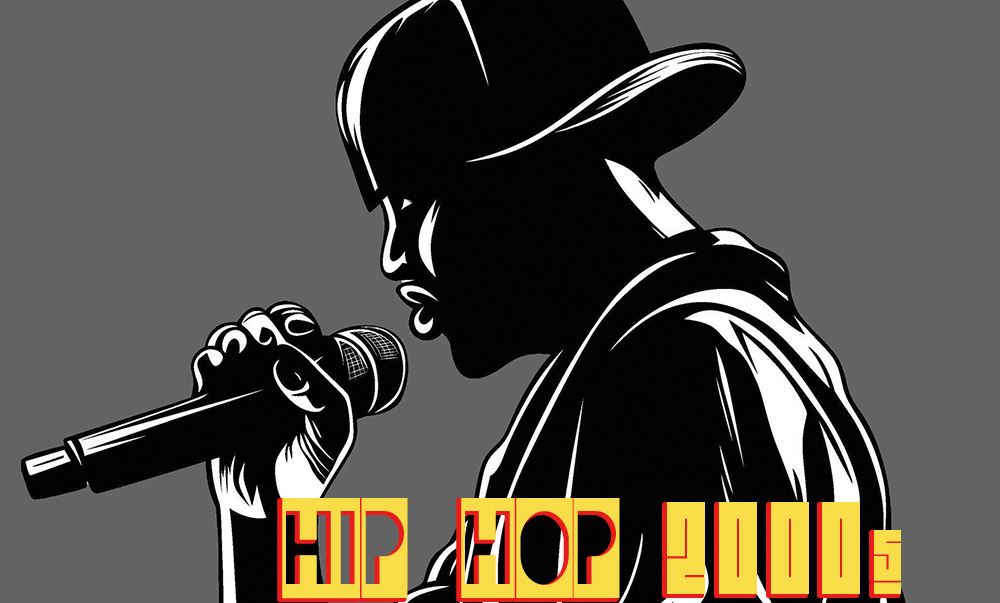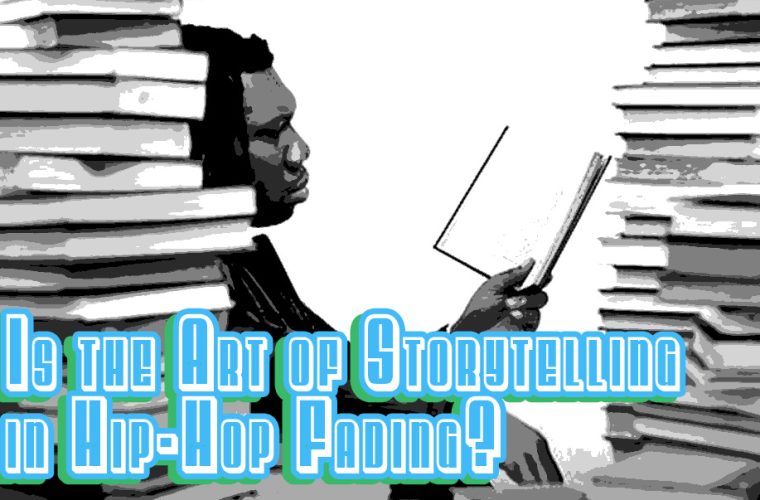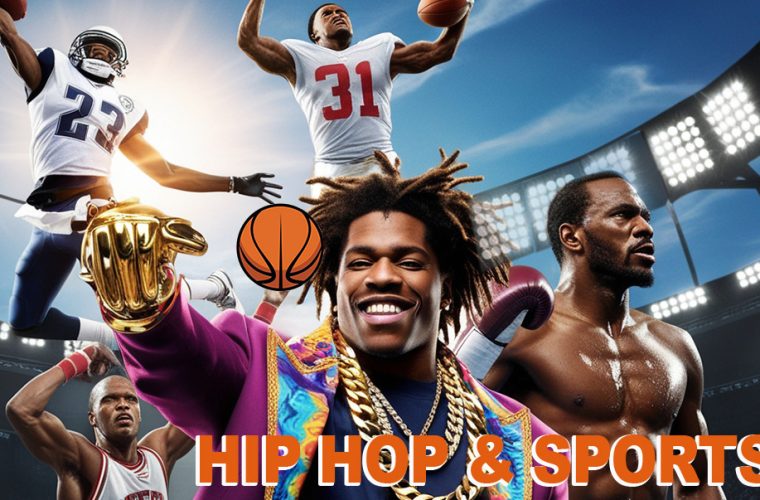
By: Dogli Wilberforce
Rapindustry.com
The 2000s is often considered a defining era in hip-hop, not just for the rise of some of the biggest stars in the industry but for the incredible diversity in sound, style, and regional representation. During this decade, hip-hop saw an explosion of different subgenres and regional movements, each with its distinct flavor. From Southern crunk to West Coast hyphy, the genre’s boundaries were stretched, leading to a period of rich creativity and experimentation.
Today’s hip-hop scene is bigger than ever, but does it offer the same level of diversity? Let’s break down why the 2000s might have truly been the golden age of hip-hop variety and how today’s music compares.
The rise of Southern hip-hop: Crunk and dirty South sounds
The 2000s marked the undeniable rise of Southern hip-hop, bringing a fresh and energetic sound to the genre. Artists like Lil Jon, Ludacris, and the Ying Yang Twins pioneered the Crunk movement, a subgenre that took party anthems to new heights. Crunk was characterized by high-energy beats, repetitive hooks, and a focus on call-and-response lyrics, making it perfect for club settings.
The influence of Southern hip-hop wasn’t limited to Crunk. Artists like OutKast, T.I., and UGK brought a more introspective yet still regionally grounded sound to the forefront, blending storytelling with the gritty, bass-heavy beats that defined the Dirty South. The 2000s allowed the South to emerge as a dominant force in hip-hop, showcasing a wide variety of sounds from cities like Atlanta, Houston, and New Orleans.
The West Coast’s hyphy movement: A unique sound in the 2000s
While the East and South were thriving, the West Coast, particularly the Bay Area, was carving out its own unique space with the hyphy movement. Led by artists like E-40, Keak da Sneak, and Too $hort, hyphy was characterized by up-tempo beats, eccentric flows, and a carefree, rebellious attitude. The term “hyphy” itself was derived from the Bay Area slang for “hyperactive,” perfectly capturing the wild, dance-oriented energy that defined this sound.
In contrast to the laid-back, G-funk style of 90s West Coast hip-hop, hyphy was all about high energy and street culture, with “going dumb” (wildly dancing or acting crazy) becoming a hallmark of the movement. The hyphy scene gave the West Coast a distinctive flavor during the 2000s, one that was deeply connected to local culture and identity.
Midwest hip-hop: The rise of lyricism and storytelling
In the 2000s, the Midwest emerged as a powerhouse of lyrical talent and introspective storytelling, with artists like Kanye West, Common, and Eminem leading the charge. Kanye’s debut album, The College Dropout (2004), blended soulful beats with insightful lyrics, revolutionizing the sound of mainstream hip-hop. His unique style of sampling old soul records and layering them with personal, often humorous lyrics set him apart from the dominant crunk and club sounds of the time.
Eminem, on the other hand, became a global icon with his raw, confessional style, blending humor, controversy, and deeply personal narratives in a way that hadn’t been seen before. His influence stretched beyond the Midwest, but his roots in Detroit’s battle rap scene gave him a unique edge that shaped his sound. The Midwest’s contribution to the 2000s hip-hop diversity cannot be overstated, as it offered a lyrical balance to the more beat-driven styles coming out of other regions.
East Coast hip-hop in the 2000s: Mixtape culture and lyricism
Though the 90s were dominated by East Coast hip-hop, the 2000s saw the region maintain its influence with a fresh wave of artists who embraced both mainstream success and underground appeal. Jay-Z and Nas continued their reign as legends, releasing some of their most critically acclaimed work, while the mixtape circuit allowed emerging artists like 50 Cent and Dipset to gain huge followings.
The mixtape culture was a key factor in the 2000s, offering artists the freedom to experiment with sounds and concepts that didn’t always fit the radio-friendly mold. Artists like Lil Wayne took full advantage of this, releasing a series of mixtapes that not only elevated his career but also showcased the depth of talent in the East Coast scene. The rawness and authenticity of mixtape culture allowed hip-hop to remain connected to its underground roots even as it became more commercially successful.
The decline of regional diversity in today’s hip-hop scene
While today’s hip-hop is undoubtedly global and massively popular, there’s a sense that much of the regional diversity that made the 2000s so exciting has faded. The rise of streaming platforms and social media has leveled the playing field, but it has also led to a more homogenized sound. Trap music, which originated in the South, now dominates the charts and influences artists across all regions, resulting in less distinction between sounds from different parts of the country.
In the 2000s, you could immediately recognize where an artist was from based on their sound, whether it was the booming bass of Crunk, the eccentric rhythms of hyphy, or the soulful beats of the Midwest. Today, that same variety is harder to find in mainstream hip-hop. While there are still pockets of diversity, the regional pride that once defined the genre seems to have diminished.
Why the 2000s set the standard for hip-hop diversity
The 2000s will forever be remembered as the golden age of hip-hop diversity because it was a time when different sounds and styles were embraced and celebrated. Regional movements like Crunk, Hyphy, and Midwest lyricism weren’t just passing trends; they were movements that shaped the direction of the genre as a whole. Each region brought something unique to the table, creating a tapestry of sounds that appealed to a wide range of listeners.
Today’s hip-hop landscape still offers room for experimentation, but the variety that once defined the genre feels somewhat muted. The 2000s taught us that hip-hop thrives when it embraces its many facets, offering something for everyone. As the genre continues to evolve, we can only hope that it once again finds the balance between global success and the regional diversity that made the 2000s such an exciting time for hip-hop.
Conclusion: Can Hip-Hop Recapture the Diversity of the 2000s?
The 2000s was a time when hip-hop pushed boundaries, embraced new voices, and celebrated the unique sounds of different regions. Whether or not today’s scene can recapture that same level of diversity remains to be seen. But for those who lived through the era, the 2000s will always represent the golden age of hip-hop diversity—when the genre was at its most experimental, inclusive, and dynamic.



